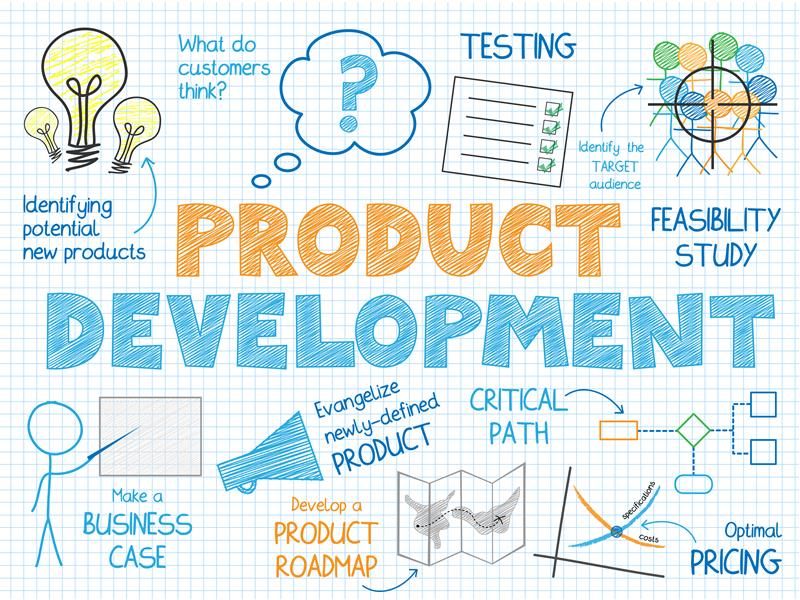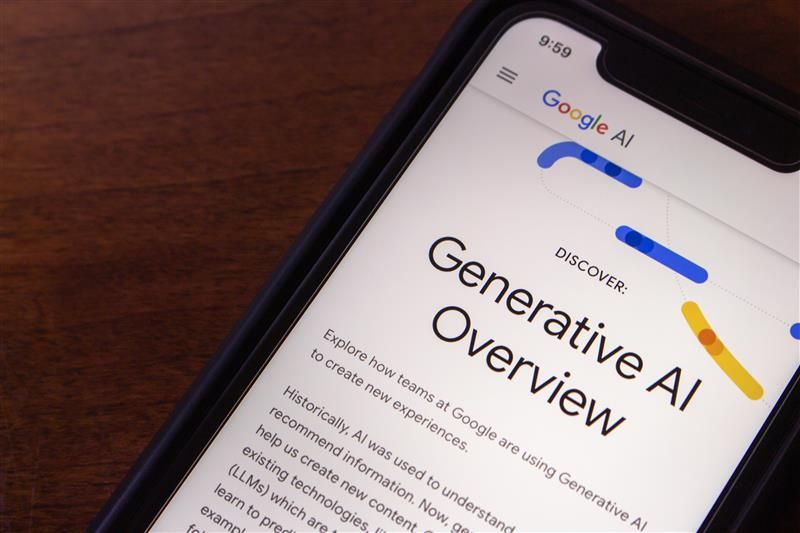Ever get the sense that fashion is moving so fast that it’s practically leaping off the runway? In an industry defined by creativity and constant reinvention, advanced data-fueled solutions are adding an entirely new dimension to the way clothes are designed, produced, and sold. And here’s the kicker: over 75% of top retailers are now gearing up to invest in these digital breakthroughs, aiming to refine everything from production workflows to the shopping experience. On leading online marketplaces, personalized product recommendations are driving close to 35% of overall consumer purchases, a testament to how pivotal customization has become. Meanwhile, fashion brands using artificial intelligence have reported 20% revenue boosts, attributing these gains to smarter forecasting and more relevant style suggestions. If that’s not enough to show how times have changed, consider the deeper impact of data-driven approaches. Companies that adopt them often find they can predict the next “it” item with uncanny accuracy, catching trends before they explode in popularity.
This transformation is about more than just flashy tech, though. It’s about leveraging these next-generation tools to keep pace with rapidly shifting consumer demands, stay eco-conscious, and boost efficiency in ways our grandparents’ generation could only dream of. Whether you’re curious about the latest AI for clothing design, want to see how an AI fashion website personalizes your online shopping, or are intrigued by an artificial intelligence clothing brand shaking up the game, this blog has got you covered. We’ll trace every twist and turn of this revolution, from how digital platforms spark new ideas for designers to the clever methods retailers use to forecast styles and manage stock. Ready to see what happens when age-old artistry meets a high-tech edge? Let’s jump right in and explore!
Journey of Intelligent Innovations in Fashion
Technology and fashion have long been on parallel paths, occasionally meeting in limited ways, like automated weaving or computerized embroidery. But recent leaps in data processing have pulled these two universes much closer together.
Early Uses of Smart Solutions in Apparel
In the beginning, digital tools found their footing in tasks like sorting inventory or monitoring basic quality checks. Although these early steps seemed small, they laid the groundwork for bigger breakthroughs. By analyzing vast swaths of information on shopping behavior, textile properties, and retail trends, developers fine-tuned the next wave of efficient, innovative solutions. These baby steps ultimately lit the spark that turned into widespread tech adoption in design, merchandising, and logistics.
Current Trends in Next-Gen Adoption
Fast-forward to now, and you’ll see chatbots that serve as virtual shopping assistants or intelligent backend systems that calculate exactly how much product each store needs no guesswork involved. Today’s fashion brands using artificial intelligence aren’t just dabbling with modern tech; they’re redefining entire business models. Startups use machine-based insights to craft on-demand clothing with minimal waste, while established powerhouses harness in-depth analytics to shape design choices for upcoming collections. It’s safe to say that if you’re not on board, you risk being left behind.
How Advanced Technology Transforms Apparel Design
Digital intelligence isn’t merely about processing numbers; it also brings fresh inspiration to designers. By synthesizing data analytics with human creativity, we open a door to design possibilities once thought impossible.

Data-Fueled Inspiration and Creativity
Designers traditionally rely on mood boards and sketches to spark new concepts. However, with new digital tools, they can tap into global trends instantly. Scraping social platforms, online galleries, and consumer responses, these platforms reveal hidden patterns that can drive an entire collection. Think of it as having an ever-watchful digital companion that never tires or loses focus, always ready with suggestions drawn from a global style narrative.
Role of Predictive Tools in Pattern and Color Forecasting
Ever notice how a color suddenly seems to be everywhere, from catwalks to fast-fashion racks? Predictive systems can crunch years of historical data and factor in cultural shifts to guess what hues, prints, or themes will be “in” next season—long before you see them on a runway. By removing the guesswork from the design process, labels can cut risk and hone their imagination on the finer details that make collections stand out.
Tech-Powered Trend Analysis
Trends are the lifeblood of apparel, and modern digital solutions dramatically simplify how companies monitor and respond to evolving tastes. It’s like having a cultural detective on speed dial.
Foreseeing the Next Big Thing
Fashion cycles can be as fleeting as a social media challenge, with what’s popular today fading into obscurity tomorrow. Predictive software sifts through hashtags, comment sections, and even real-time sales figures to spot emerging micro-trends. This swift reaction time allows brands to pivot quickly, ensuring they stay relevant and profitable.
Leveraging Social Media and Online Behaviors
From TikTok dance outfits to Instagram’s OOTD (Outfit of the Day) posts, the digital realm has become a hotbed for style inspiration. Intelligent trackers analyze images for recurring silhouettes, popular color stories, and even accessories. By processing massive amounts of data around the clock, trend forecasters can spot when something’s brewing in the background—giving labels the jump on new crazes before they explode into the mainstream.
Personalization and Customization
We live in a world that prizes individuality, and cookie-cutter clothing lines don’t quite make the grade anymore. People crave unique products that align perfectly with their personal taste and body shape.
Tailor-Made Outfits through Automated Recommendations
Data-focused systems factor in your shopping history, preferred looks, and even details like climate in your area. Think of it as having a personal stylist who’s got every piece of your wardrobe memorized. Whether you lean towards loud patterns or subdued neutrals, these platforms serve up precisely the items that reflect you best.
Enhancing Customer Experience with Perfect Fits
A major pain point in online shopping is figuring out sizing. Tech-based solutions compare a person’s dimensions against product measurements to remove the need for manual guesswork. By refining these fits through ongoing feedback, brands enjoy fewer returns and happier customers.
Predictive Analytics in Apparel
Behind each blockbuster fashion release lies a trove of data, and predictive techniques convert that data into clear-cut choices for brands.
Demand Forecasting for Popular Products
Picture combining past sales numbers, social media chatter, and global economic indicators to pinpoint exactly which items will fly off the shelves. Predictive engines do exactly this, helping companies know which styles, sizes, and colors to stock up on. Beyond just boosting sales, it ensures limited waste—an ever-pressing issue in the fashion world.
Optimizing Seasonal and Event-Based Collections
Changing seasons and special occasions can flip consumer behaviors on their heads. Smart technology studies how customers reacted in previous years, weighs current real-time preferences, and then predicts what’s likely to be a hit this time around. With this crystal ball effect, brands can ride the wave of shopper interest while sidestepping the trap of excess inventory.
Virtual Fitting and Try-Ons
Sick of hauling armloads of clothes into claustrophobic fitting rooms? The future, complete with virtual try-ons promises a more streamlined approach.
Immersive Dressing Rooms
Augmented visuals enable you to see how a piece will look without physically wearing it. All you need is a phone camera or a device with similar capabilities. Think of it like a magic mirror that instantly slips you into the latest jeans or cocktail dress, minus the hassle of wriggling out of your own clothes.
Reducing Returns with Accurate Measurement Tools
One of the biggest culprits in e-commerce returns is size mismatch. Advanced digital measurements gather precise body metrics and match them to garment specifications, helping you order exactly the right size. This cuts down on back-and-forth shipping, saving both time and resources.
Smart Fabrics and Wearable Technology
Imagine your clothes adapting to temperature changes or monitoring your posture. We’re entering an era where fabrics do more than just look good.
What Makes Fabrics “Smart”?
These innovative textiles include embedded components that react to the environment. Some can monitor heart rates, others can track perspiration levels, and a few can even shift colors based on temperature. With the right digital ecosystem, these features go a step further, providing ongoing insights and suggestions for improving performance or comfort.
Integrating Sensors and Monitoring Devices
Athletic brands are particularly enamored with sensor-laden apparel that records data like steps, form, and stress levels. This information can then be sent to an app or website, giving you real-time feedback on how to enhance your workout or daily routine. It’s akin to having a personal trainer stitched into your gear—minus the monthly fees.
Ethical and Sustainable Practices
With everyone from consumers to governments concerned about environmental and social responsibility, modern tools can help keep companies honest and efficient.
Technology’s Role in Cutting Down Waste
Garment waste is one of the biggest crises in fashion. Intelligent systems, by accurately predicting demand, can lessen overproduction. That means fewer leftover items cluttering warehouses and fewer garments destined for landfills. Additionally, data-crunching platforms help identify more planet-friendly fabrics and processes, fueling a renewed commitment to greener production methods.
Transparency and Fair Labor through Digital Tracking
In an age where shoppers want to know the backstory of their clothes, digital platforms that record each stage of production provide vital reassurance. It’s now possible to trace an item from raw cotton in the field to the final purchase, ensuring every step meets ethical standards. This traceability builds trust, especially in an artificial intelligence clothing brand that markets itself as both progressive and principled.
Streamlining Production with Intelligent Systems
The journey from raw material to finished piece can be long and prone to hiccups, but process automation is swiftly changing that.
Automated Cutting and Sewing Techniques
Traditionally, cutting patterns by hand and sewing them together required a great deal of skill and time. Robotic cutters now slice fabric with pinpoint accuracy, ensuring uniformity across thousands of pieces. Certain sewing machines are likewise guided by advanced instructions, seamlessly attaching buttons or zippers without a hitch.
Robotics in Apparel Manufacturing
Incorporating mechanical helpers not only speeds up production but also boosts safety. These machines adapt to various materials and styles in real time, continuously refining their techniques. Over multiple production runs, they gather “experience” that leads to fewer defects and streamlined workflows.
Minimizing Inventory Surplus
Excess unsold items spell lost money and wasted resources, prompting brands to turn to sophisticated data-crunching methods to strike the right balance.
Real-Time Tracking and Stock Management
Relying on outdated spreadsheets is a recipe for errors. Nowadays, modern dashboards give instantaneous updates on how many items remain in each warehouse and store. If one location sells out, these systems can rapidly redirect stock from a less active store, preventing both missed sales and wasted products.
Smart Efficiency to Prevent Overproduction
Overproducing leads to warehouse logjams and frantic clearance sales. Data-driven forecasting helps nail down exactly how much to make, guided by everything from previous sales cycles to upcoming marketing campaigns. That way, your brand can spend more time focusing on style innovations and less time worrying about clearing out unwanted inventory.
E-Commerce Powered by Modern Technology
These days, an online presence isn’t just an option—it’s critical. And having up-to-date tech solutions under the hood can be the difference between good and phenomenal.
Personalized Product Recommendations on Online Fashion Platforms
Long gone are the days of generic “You May Also Like” sections. Platforms now dissect your browsing habits, past purchases, and social media “likes” to propose items you’ll likely adore. This sense of being “understood” fosters a deeper bond between shopper and brand, often translating to repeat visits and bigger carts.
Boosting Conversions with Smarter Search
Most online browsers know roughly what they’re looking for—even if they describe it vaguely. Intelligent search systems correct spelling, account for synonyms, and can even match images to similar products. This bridging of online and offline inspirations makes it easier to find that perfect outfit—and it keeps folks engaged on the site longer.
Enhancing the Customer Journey
Loyalty in fashion doesn’t come solely from stylish designs or comfy fits. It also thrives on a seamless experience from first click to final purchase.
Chatbots and Digital Assistants
Imagine having a fashion-savvy friend available 24/7, always ready to suggest a top that goes with that new pair of jeans or to check if your size is in stock. These helpful chat windows add a layer of immediacy and personalization that can’t be matched by static FAQs.
Virtual Stylists and Personal Shoppers
Going a step beyond simple chat interactions, some online services can compile your past orders, analyze your daily activities (do you dress for the office or for yoga class more often?), and craft entire wardrobe suggestions. It’s like having a personal shopper who already knows your closet, preferences, and daily routine, making every recommendation feel tailored and thoughtful.
Data-Driven Sales Strategies
In today’s market, strategies grounded in real insights consistently outperform scattershot approaches. Let’s explore how data informs sales tactics.
Targeted Marketing and Adaptive Pricing
Brands can segment their audience into finely tuned categories, from location-based groups to niche subcultures. This makes ads not just relevant but often irresistible. Meanwhile, dynamic pricing models can fluctuate product costs depending on real-time demand, competitor rates, or even the time of day, ensuring maximum profitability.
Sales Forecasting and Inventory Alignment
By using patterns gleaned from previous years, along with current consumer engagement, companies can forecast how many items of each style they should produce and stock monthly or even daily. This synergy between forecasting and inventory management prevents last-minute scrambles for hot sellers and reduces the clutter of unsold goods.
Smart Solutions for Apparel
Curious about which specific tools you can integrate into your label’s processes? Let’s break down a few game-changers that could take your operations to the next level.
Platforms and Tools for Automated Design
These systems expedite repetitive tasks like generating multiple variations of a pattern or color scheme. Some also include brand-specific guidelines, ensuring every new design remains loyal to the label’s signature style. By offloading the tedious chores, in-house creatives can devote more energy to visionary concepts and storytelling.
Next-Level Quality Control
Modern inspection platforms far exceed human capabilities in spotting minuscule defects. Cameras scan thousands of garments for any irregularities, and if something’s off—like a stray thread or slightly mismatched hue—the piece is flagged for further review. This automated scrutiny keeps brand reputations intact and cuts down on returns.
Real-World Examples of Tech in Apparel
Enough theory—let’s check out how these principles work in practice with real brands leading the digital revolution.
Success Stories from Artificial Intelligence Clothing Brands
Some startups build their entire identity around harnessing modern computing from day one. They release hyper-personalized designs, track consumer reactions in real time, and pivot faster than traditional labels can plan a single season. The result? They waste less, ramp up faster, and deliver exactly what shoppers crave.
Notable Fashion Brands Using Artificial Intelligence
On the other end of the spectrum, big names in luxury and mass-market retail have updated their processes to include data analysis. Whether it’s a couture house fine-tuning intricate details for high-end gowns or a fast-fashion giant pumping out new collections weekly, these brands rely on technology to keep one finger firmly on the pulse of customer sentiment.
Need Help with Your Business
Contact Us NowBold Moves in Marketing and Branding
Standing out in a cluttered digital landscape calls for more than good luck. Brands need precise, thoughtful campaigns that resonate with specific audiences.
Personalized Ads for Niche Markets
The same technology that helps break down data for inventory also excels at pinpointing micro-communities. Want to reach surfers who prefer sustainable swimwear? Easy. Looking for college students interested in edgy streetwear? Done. By crafting ads that speak directly to these segments, brands see higher engagement and conversion rates.
Strengthening Online Presence through Smart Campaigns
Rather than guess which visuals or taglines might click with shoppers, marketing teams now rely on real-time metrics to adjust strategies instantly. Was a campaign underperforming with a certain age bracket? Swap out the images or shift the budget to a better-performing audience. This fluid, responsive approach keeps branding modern and on-point.
Data-Driven Supply Chain and Logistics
From the moment a garment leaves the factory to when it lands on your doorstep, there’s a complex puzzle of timing, routes, and conditions. Today’s technology ensures every piece of the supply chain puzzle fits together perfectly.
End-to-End Tracking with Connected Devices
By placing sensors along the journey, brands can monitor factors like temperature, location, or potential mishandling. These continuous updates help foresee snags, allowing managers to switch shipping routes or carriers before delays pile up. This level of control not only preserves product quality but keeps customers in the loop about delivery timelines.
Optimizing Shipment Routes
Having your shipment stuck in traffic during peak hours or sent on a longer path translates to costs and unhappy customers. Logistics tools that factor in traffic data, weather patterns, and real-time incidents ensure that your products take the quickest, most efficient route. Less wasted fuel means reduced carbon emissions, aligning with growing demand for eco-friendly shipping practices.
Challenges and Considerations
While these innovations offer huge perks, they’re not without complications. Being aware of the obstacles ensures you can tackle them head-on.
Cost and Integration Barriers
Incorporating cutting-edge systems often carries an upfront price tag, from specialized software to staff training. Small and midsized businesses might feel hesitant. However, as more providers enter the market, costs have been trending downward. Starting with scaled-down versions or pay-as-you-go models can help brands dip their toes in without facing overwhelming expenses.
Consumer Data Privacy and Ethical Concerns
In a world of heightened privacy regulations (like GDPR or CCPA), it’s crucial for brands to handle personal information responsibly. Collecting or using data in ways customers find invasive can damage trust and hurt sales. Openness about how data is gathered, stored, and used will go a long way in maintaining strong relationships with shoppers.
Tech-Infused Fashion Revolution
We’re only at the start of what these systems can do. In the coming years, technologies like next-gen computing and sensor-based manufacturing could shake up the industry even more.
Emerging Technologies on the Horizon
Envision clothing that’s conceptualized in seconds based on current social media chatter, or mass-produced through automated 3D printers right in a local pop-up store. Concepts like quantum-level calculations might sound sci-fi, but they could supercharge the speed and accuracy of data processing within our lifetime. The pace of innovation suggests we’ll keep seeing breakthroughs that defy our current imaginations.
Potential Impact on Traditional Roles
As systems handle repetitive tasks, positions like “designer” or “supply chain manager” will evolve. Designers may rely on tech to handle technical drafting, freeing them to devote more energy to conceptual storytelling. Meanwhile, logistics experts might shift from manual scheduling to interpreting real-time dashboards for strategic decisions. Rather than making people obsolete, these systems allow professionals to refocus on what humans do best—be visionary, flexible, and empathic.
Fabric of Tomorrow’s Wardrobe
As we stitch together the pieces of this AI-driven revolution, one thing becomes crystal clear: the fashion world is on the cusp of a new era. AI has stepped in like a master tailor, snipping away inefficiencies, sewing in personalization, and weaving sustainability into every seam. From “AI fashion website” experiences that make shopping a breeze to “AI for clothing design” innovations that spark endless creativity, this transformation isn’t a passing trend—it’s the new normal.
In the coming years, expect to see even more breakthroughs. Imagine drone deliveries that arrive before you realize you need a new scarf or AI-generated collections that feel as if they were designed just for you. The intersection of style and technology will only get sharper, brighter, and more vibrant. Whether you’re a fashionista craving the next must-have item or a brand figuring out how to stay ahead, AI’s got your back.
So, are you ready to embrace this brave new world of fashion? Because the runway of tomorrow isn’t just under bright lights and cameras; it’s in the algorithms humming beneath your fingertips, shaping the wardrobes we haven’t even dreamed of yet. The future of fashion is smart, it’s bold, and it’s tailor-made by AI to fit us all perfectly.





